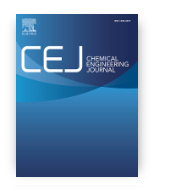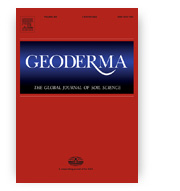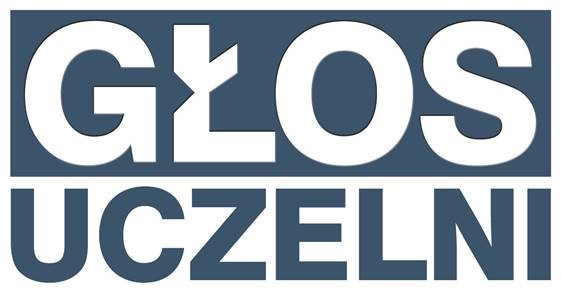
Research papers of the month – April 2023
We present the highest-score research papers of April 2023. These papers have ben published in journals with the highest Ministerial score – 200 points.
W. M. Piotrowski; K. Kniec-Stec; M. Suta; B. Bogielski; Błażej Poźniak; Łukasz Marciniak
Chemical Engineering Journal
Ministerial score = 200.0
Journal Impact Factor (2023) = 16,744 (Q1)
 Luminescence thermal quenching phenomenon is a major limitation in the development of luminescent thermometers of high-resolution operating in the temperature range above 400 K. Therefore, in order to circumvent this limitation, in this work CaGa4O7:0.01 % Mn2+, 0.05 % Cr3+ is proposed as a new biocompatible thermometer in which the luminescence intensity of the Mn2+ -based emission is thermally enhanced providing a high signal-to-noise ratio at temperatures even above 520 K. Therefore, as shown, the intensity ratio of Mn2+ and Cr3+ ions can be successfully used for ratiometric temperature readout not only for thermal sensing with a relative sensitivity of 2.08 % K−1 at 403 K and δT = 0.1 K and for 2-dimensional thermal imaging using a digital camera.
Luminescence thermal quenching phenomenon is a major limitation in the development of luminescent thermometers of high-resolution operating in the temperature range above 400 K. Therefore, in order to circumvent this limitation, in this work CaGa4O7:0.01 % Mn2+, 0.05 % Cr3+ is proposed as a new biocompatible thermometer in which the luminescence intensity of the Mn2+ -based emission is thermally enhanced providing a high signal-to-noise ratio at temperatures even above 520 K. Therefore, as shown, the intensity ratio of Mn2+ and Cr3+ ions can be successfully used for ratiometric temperature readout not only for thermal sensing with a relative sensitivity of 2.08 % K−1 at 403 K and δT = 0.1 K and for 2-dimensional thermal imaging using a digital camera.
DOI:10.1016/j.cej.2023.142492
Joann Kowalska; Markus Egli; Martina Vögtli; Dmitry Tikhomirov; Beata Łabaz; Marcus Christl; Jarosław Waroszewski
Geoderma
Ministerial score = 200.0
Journal Impact Factor (2023) = 7,422 (Q1)
 Loess deposits are terrestrial archives that record progressive deposition and erosion events of varying intensities. Data on long-term erosion rates are crucial for tracking changes in the stability of a loess mantle and reconstructing the evolution of loess-enriched soils. We used meteoric 10Be to i) define the factors responsible for its distribution along the profile, ii) determine long-term erosion rates in loess-enriched polygenetic soils characterised by illuviation processes, and iii) evaluate initial soil thickness and stability over time. Distribution of meteoric 10Be along the soil profiles was mainly driven by its translocation with clay particles and accumulation in the illuvial horizons. However, in some cases (loess over serpentinite), the highest meteoric 10Be content was measured in the C horizons which may be related to the longer exposure of serpentinite to meteoric 10Be deposition before the occurrence of a major loess accumulation event. The estimated long-term erosion rates greatly depend on the assumed environmental settings and were in the range of about 0.1–3 t ha−1 yr−1. Based on the soil redistribution rates, we reconstructed the removed loess layer which was from a few dm to about 3 m. The results indicate four main soil evolutionary phases: a) pre-exposure of sediments to meteoric 10Be accumulation; b) formation of thick loess mantles during the Last Glacial Maximum; c) erosion events between 21 and 11.6 ka that significantly shallowed the initial loess mantles; d) pedogenesis (with subsoil clay accumulation) in the Holocene within the thinner relicts of the former Late Pleistocene loess mantle followed by a recent and strong erosional phase due to human impact. These phases are also believed to have occurred in several other areas of Central Europe.
Loess deposits are terrestrial archives that record progressive deposition and erosion events of varying intensities. Data on long-term erosion rates are crucial for tracking changes in the stability of a loess mantle and reconstructing the evolution of loess-enriched soils. We used meteoric 10Be to i) define the factors responsible for its distribution along the profile, ii) determine long-term erosion rates in loess-enriched polygenetic soils characterised by illuviation processes, and iii) evaluate initial soil thickness and stability over time. Distribution of meteoric 10Be along the soil profiles was mainly driven by its translocation with clay particles and accumulation in the illuvial horizons. However, in some cases (loess over serpentinite), the highest meteoric 10Be content was measured in the C horizons which may be related to the longer exposure of serpentinite to meteoric 10Be deposition before the occurrence of a major loess accumulation event. The estimated long-term erosion rates greatly depend on the assumed environmental settings and were in the range of about 0.1–3 t ha−1 yr−1. Based on the soil redistribution rates, we reconstructed the removed loess layer which was from a few dm to about 3 m. The results indicate four main soil evolutionary phases: a) pre-exposure of sediments to meteoric 10Be accumulation; b) formation of thick loess mantles during the Last Glacial Maximum; c) erosion events between 21 and 11.6 ka that significantly shallowed the initial loess mantles; d) pedogenesis (with subsoil clay accumulation) in the Holocene within the thinner relicts of the former Late Pleistocene loess mantle followed by a recent and strong erosional phase due to human impact. These phases are also believed to have occurred in several other areas of Central Europe.
DOI:10.1016/j.geoderma.2023.116451










